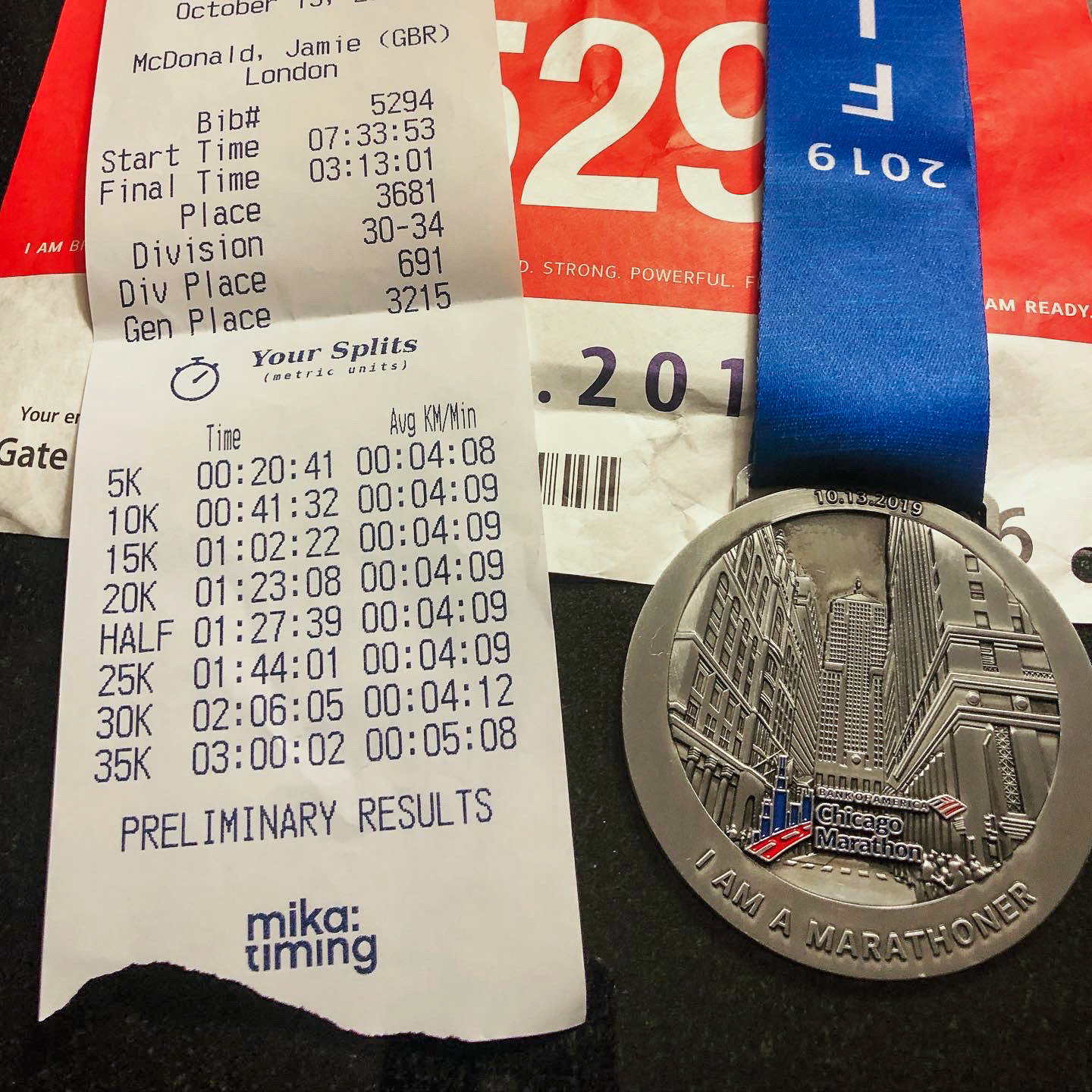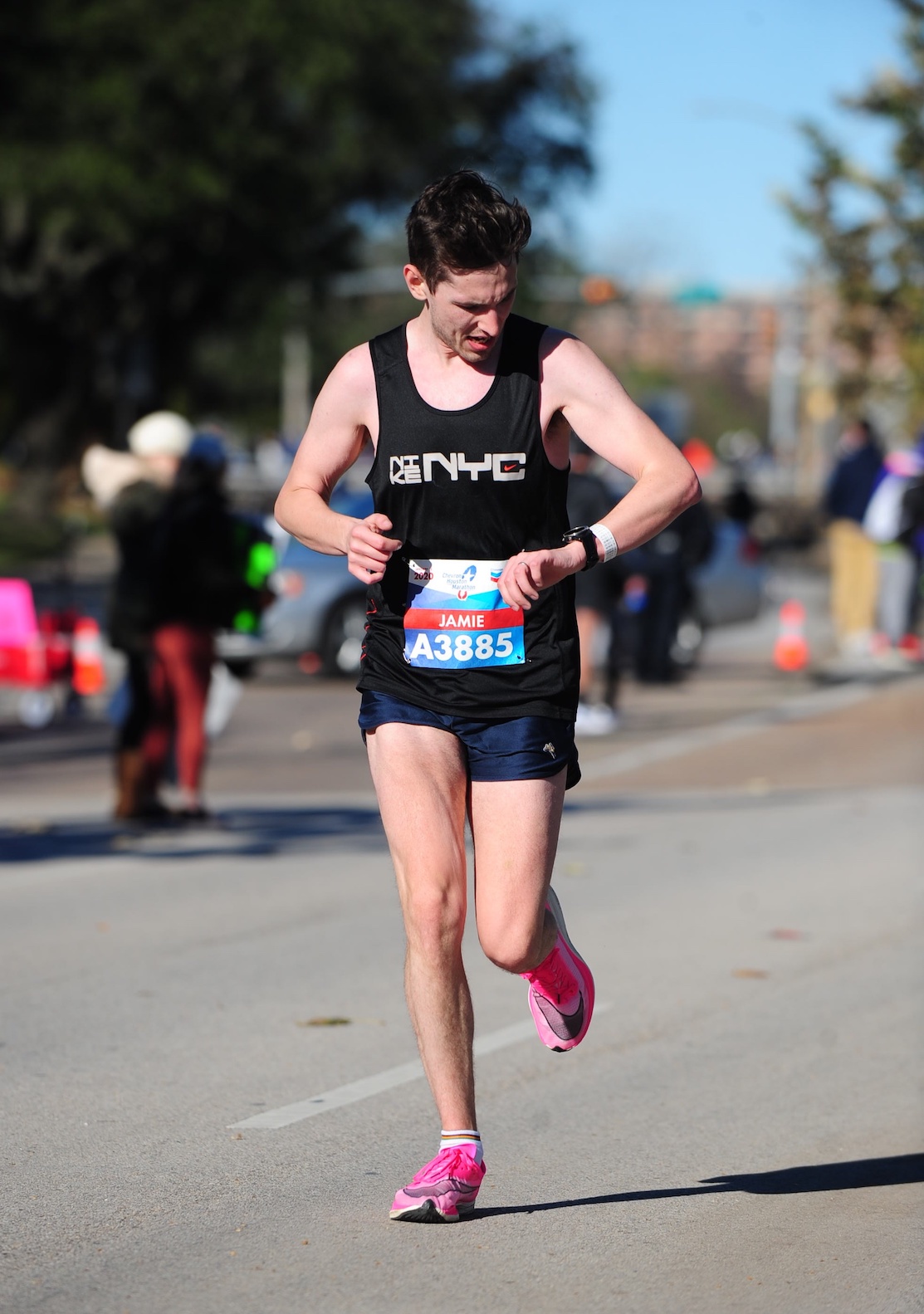Chicago
The first 30K of my 2019 Chicago marathon was a breeze. I pasted a temporary tattoo with the splits for 3:05 on my forearm before leaving an airport hotel to board a train packed with other runners, all heading for the start line in Grant Park.
I got off to a confident start and almost subconsciously started pushing for a sub-3 finish. I was running comfortable even splits at 4:09/km, passing the halfway point well on track at 1:27:39. But by 35K I’d hit the wall like never before. It was the first time I remember having to stop and walk for part of a race.

I finished up at 3:13. That was still a decent time for me, but the reason for the gap was pretty obvious in hindsight. I’d half-assed the training. My marathon time improved from 3:20 to 3:09 over the last year through a lot of easy distance runs and regular 10K or half marathon races. I saw the limits of that approach. If I was serious about breaking 3 hours, I’d need to follow a training plan rigorously (and stop skipping the workouts).
Houston
Running a marathon can be a lot of things: an excuse to visit a new city, a checkbox on a list, an atmosphere to soak up. My next marathon would be about the sub-3 goal and nothing else, so I went in search of the perfect race.
Everything started pointing to Houston. It’s a popular and well-organised race with a flat course – just 70m of elevation gain. It was also perfectly timed in the middle of January. No time to wallow in the disappointment of Chicago, just straight into 3 months of solid training.
Getting organised
I went back to basics, tailoring my training plan one week at a time on pencil and paper. Just like reading a book or putting on a record, there was something satisfying about the analog ritual. Filling out the stats after every run made progress feel more tangible.

I’m sure there’s some insight to be gained from working back through the data, but I haven’t really looked for it. A moment of reflection after each run was the important part. I ended up feeling accountable to the training log, too. I was delivering on a commitment to myself each time I sat down to fill it out.
Getting out of bed
It’s easy to decide to skip a workout and run easy after a long day at work, so I started to run in the morning 5 days a week. Even when the weather was miserable, when I was out of town, or when I didn’t really feel like it. Surprisingly, once I settled into a routine, the speed workouts I’d once dreaded became the runs I enjoyed most.
After a while it became automatic. I transformed into a morning runner. This did come with a few perks. I particularly remember some incredible sunrises during runs around Marina Bay on a work trip to Singapore.
Getting super shoes
On race day, I laced up my Nike Vaporfly NEXT% in Pink Blast. Running in these shoes feels amazing. It’s extremely hard to go slow. They’re perhaps a little controversial still, but I’m honestly fine with being propelled through the 3 hour barrier by a carbon plate when everybody else is wearing the exact same shoes.

I shed as many distractions as possible, even leaving my phone at the hotel. I carried a single energy gel in my hand for the start line and memorised the location of one more that I’d pick up on the course.
Putting it all together
There was some extra buzz around this year’s race, with several sub-elite runners lining up for a last shot at qualifying for the Olympic Trials. My goal felt extremely modest in comparison, but this is one of the things I love most about running. Everybody runs a different race on the same course. Every time you make progress, there’s so much further you can go.
Training had gone well, even accounting for some lighter weeks to recover from the NYC 60K. I’d spent the week leading up to the race recovering from a cold, so a little congestion on race day was my main concern.

Until I crossed the start line, I was nervous about repeating the Chicago experience and watching the wheels come off with 10K to go. Once I got started, I didn’t think about much at all. Just periodic check-ins on pace and hydration. My pace did drop a little in the rolling hills and direct sun of Allen Parkway, but when we arrived back in the city I had just enough left for a final push.
It worked out. I finished in 2:58:31, exactly as planned and 1:29 under the all-important Boston Marathon qualifying standard.